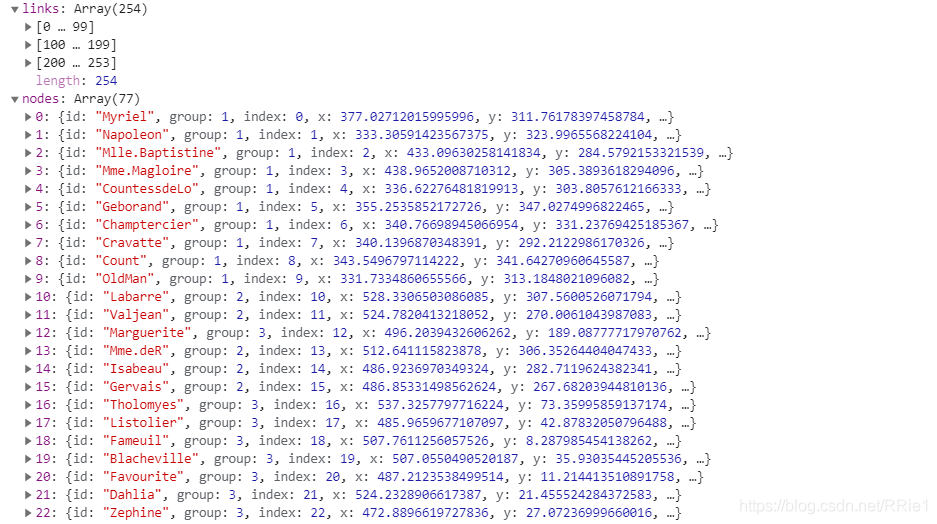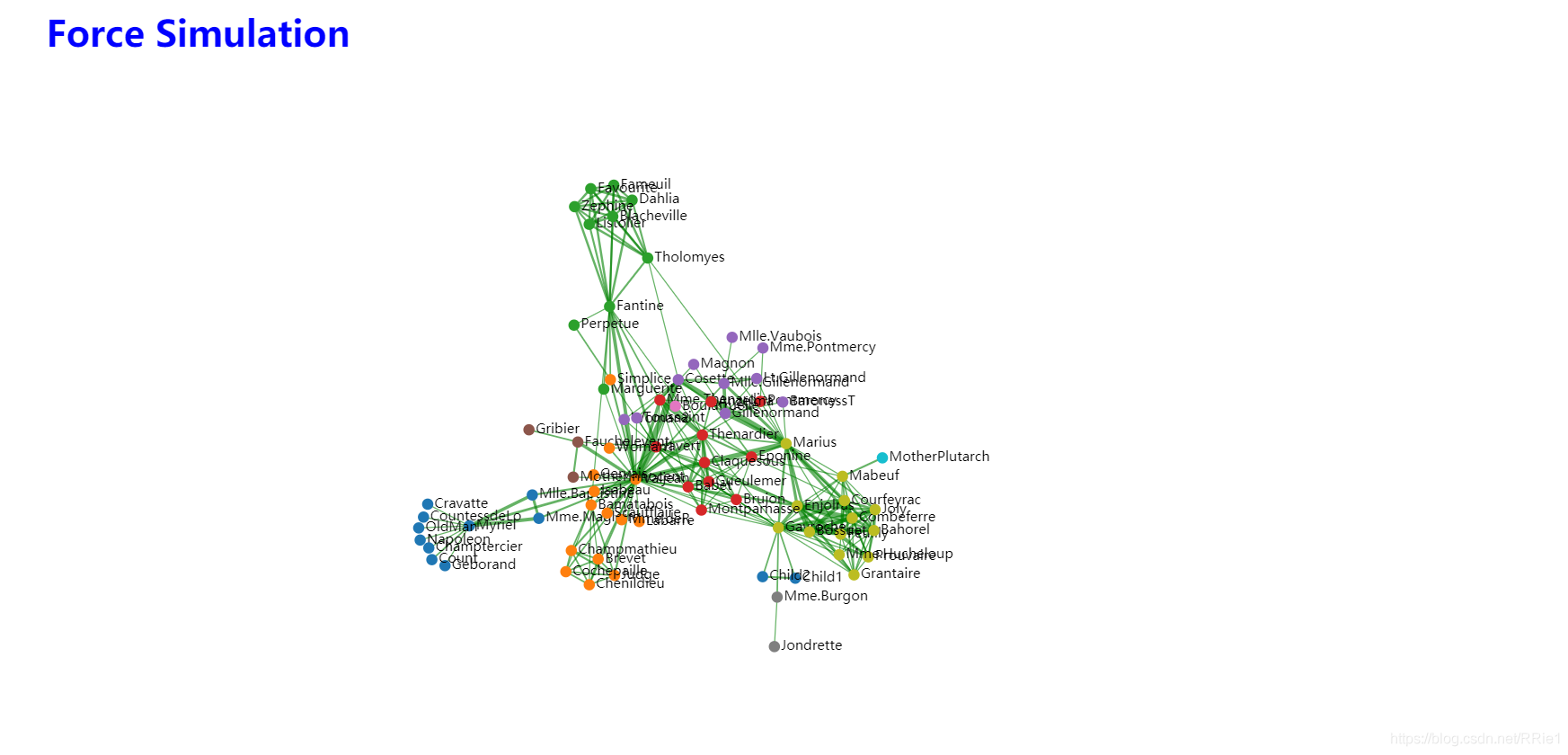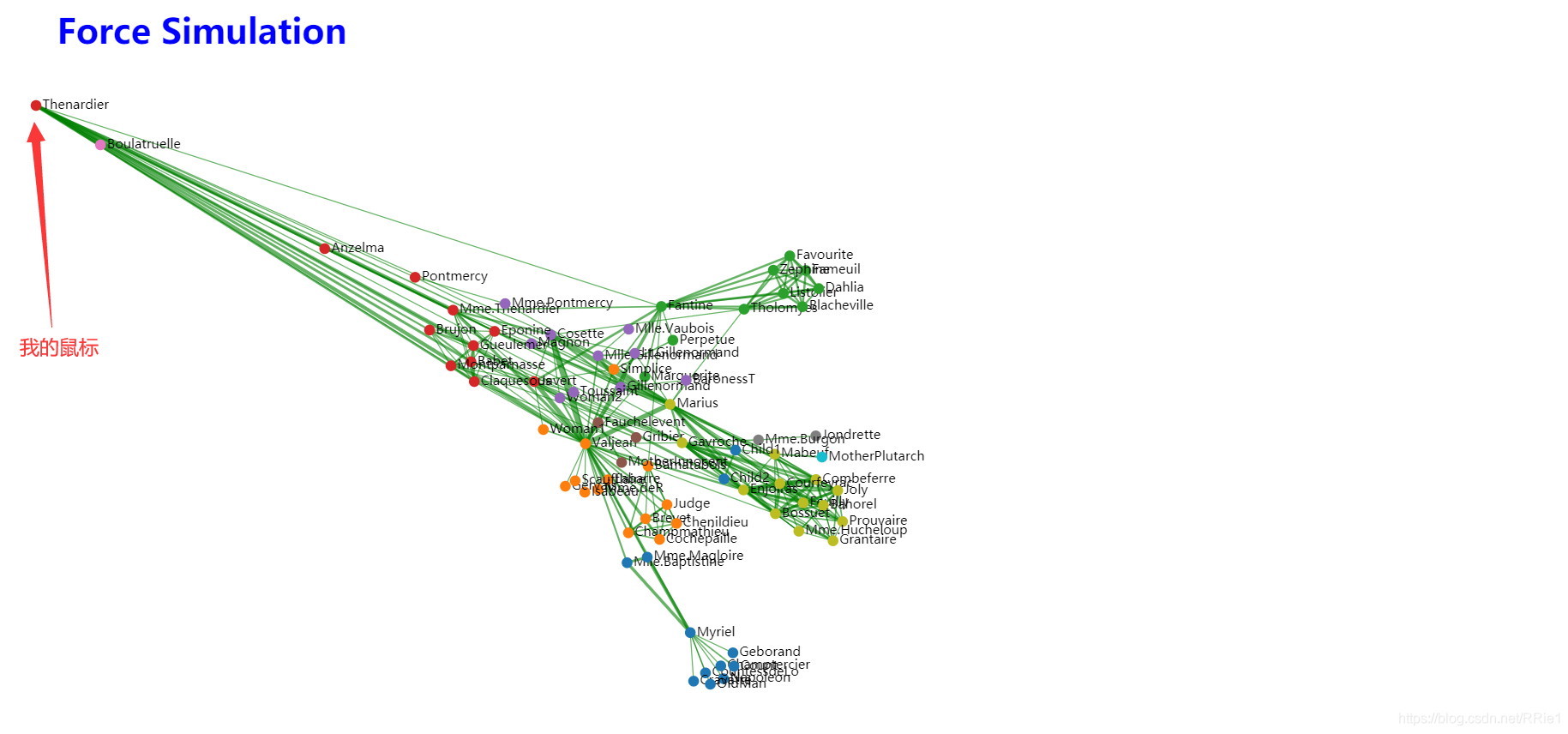Force Simulation 力导图实战 @ D3.js
数据结构
做力导图使用到的数据为json数据,一般采用json数据来表达图结构。本次实验选用的json数据数据结构如下(图片中为经过了力模拟后的):
- links至少要由
target,source组成- 这连个属性标记了起始node和终止node,其值通

常为node的id。
- 这连个属性标记了起始node和终止node,其值通
- node由
group和id构成- group表示node属于哪一类(方便着色)
- id是node的唯一标识符
思路分析
- 画布初始化,全局变量定义
- 数据读取
- 力模拟
- 数据绑定 datajoin
- 结点node(
和 ) - 连边link
- 结点node(
simulation.on("tick",tick),tick函数编写- drag 拖曳交互设计
画布初始化,全局变量定义
这步比较基础,直接贴上代码
const svg = d3.select('svg') |
数据读取
通常读取进来的数据要进行预处理,但是图数据有些不同。通常我们拿到的数据都是不符合d3力导图数据结构要求的。一般用python等语言写的脚本文件进行数据预处理整理成符合要求的数据结构。
d3.json('./data/miserables.json').then(data => { |
力模拟
有两点需要注意的地方:
- forceLink这里要处理一下,绑定
node.id。不然会按照node的索引来进行,这样设置tick的时候会非常不方便 - 仅进行力模拟结点的位置不会进行实时更新,必须要有
simulation.on(tick)才会把力模拟的结果反映到图元上
simulation = d3.forceSimulation() |
数据绑定 datajoin
这里我们需要绑定的三个元素为: 结点,结点名称,链接
结点与结点名称
一个传统的方法是circle和text分开绑定,但是这里采用一个更加高效的办法:就是创建一个circle和text两个图元
- 创建结点group
nodes = group.append('g').attr("class", "nodegroup") |
结点绑定(circle)
var circle = nodes.append('circle')
.attr('r', 5)
.attr('fill', d => color(d.group))结点名称绑定
var label = nodes.append('text')
.attr('x', 6)
.attr('y', 3 )
.html(d => d.id )
.attr('font-size', '12px')
链接
这里有个坑,line标签是不能设置fill的,应该通过设置stroke属性来设置line的颜色。
//注意设置stroke |
tick函数编写
在tick函数中,我们要更新node的位置和link的起点和终点
注意:node指包含了circle和text的那个group,这里只需要更新那个group的位置,
const tick = function(){ |
drag 拖曳交互设计
现在给图加一些交互效果:让结点能够被鼠标选中并拖拽
d3.drag()函数
drag函数有三个需要配置的,分别是拖曳开始,拖曳过程和拖曳结束
const dragFunc = d3.drag() |
dragstarted 拖曳开始
alphaTarget:衰减系数,对节点位置移动过程的模拟,数值越高移动越快,数值范围[0,1]restart(): 重新启动仿真的内部定时器并且返回仿真。与simulation*.alphaTarget或simulation*.alpha结合使用,这个方法可以在交互期间再次激活仿真,比如拖拽节点或者在使用simulation.stop临时暂停仿真后使用。
function dragstarted(d) { |
dragged 拖曳过程
|
dragended 拖曳结束
最后将fx和fy设置成null,表示拖曳结束后让结点回到力模拟的位置,而不是停留在拖曳的位置
const dragended = function(d){ |
调用方式
dragFunc(nodes)//param:拖曳对象 |
完整代码
|
效果
初始

拖曳
